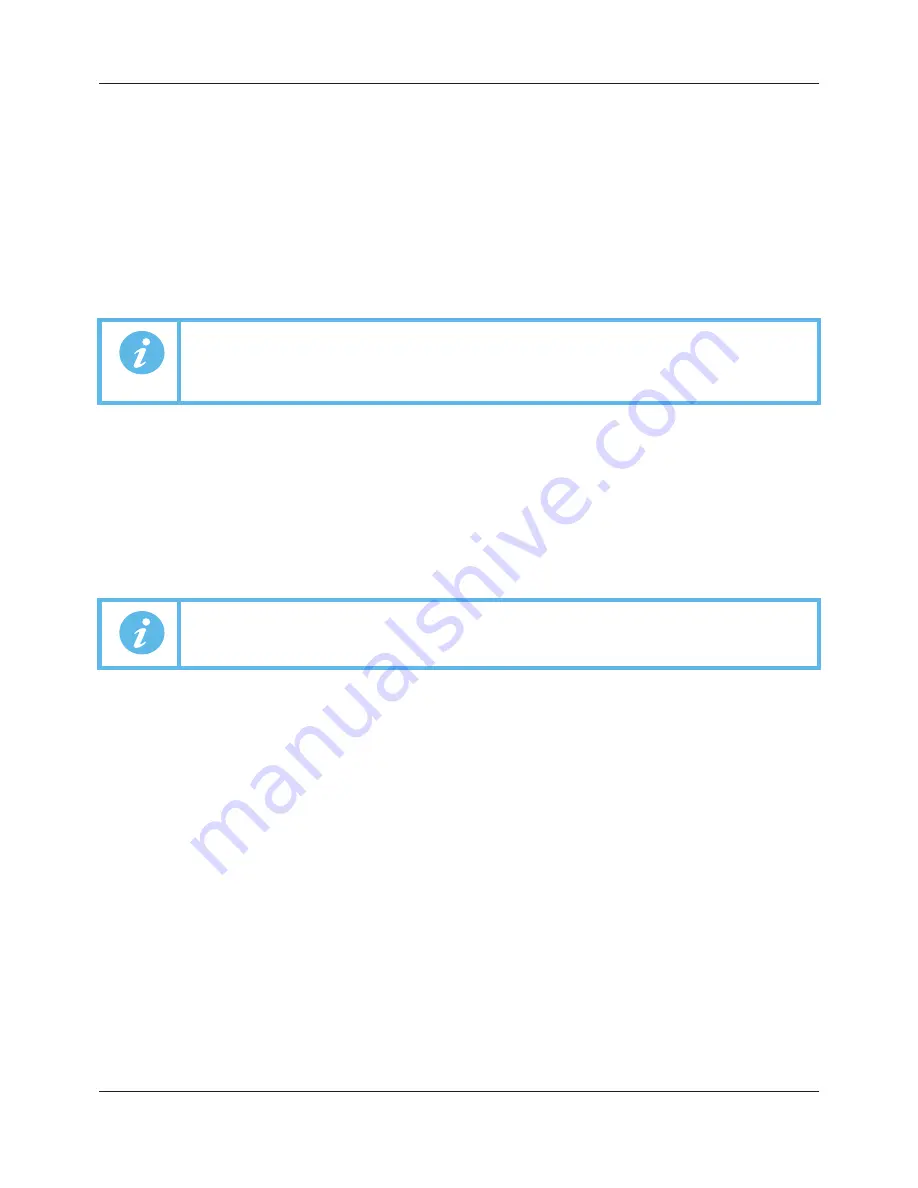
FEC920: USER GUIDE
Page 65
September 18
Rate
Allows the user to specify the frequency at which the contents of the Flash memory are
archived to the USB port or, via FTP, to a PC. Scrollable settings are:
None: Automatic archiving is disabled. Any archiving must be initiated by the user
using Demand Archiving, as described in Section 5.3.7.
Hourly: Archive occurs on the hour, every hour.
Daily: Archive initiated at 00:00* each day.
Weekly: Archive is initiated at midnight* every Sunday.
Monthly: Archive is initiated at 00:00* on the 1st of every month.
Automatic: The instrument selects the least frequent of the above archive periods which
is guaranteed not to lose data as a result of the internal flash memory running
out of space.
Destination
Select ‘FTP Server’ for archive to a remote PC, or ‘USB’ to archive to the USB port device.
File format
Select ‘Binary (UHH)’ ‘CSV’ or ‘Both’.
Binary (UHH):
A proprietary format used by the instrument that needs other software (e.g.
Review’, to interpret the data before it can be presented in spreadsheets etc. Binary
files have the extension ‘.uhh’.
CSV: This format is a standard open-file format for numeric data. A simple ASCII-based
format, it is readable by a wide range of pc applications as well as being suitable for
direct import into many commercial databases. CSV files have the extension ‘.csv’.
Both: Archiving includes both .uhh and .csv files.
CSV Values
Appears only if ‘File Format’ is set to ‘CSV’ or ‘Both’. If ‘Yes’ is selected, then process
values are included in the file (see Figure 61 for details).
CSV Messages
Appears only if ‘File Format’ is set to ‘CSV’ or ‘Both’. If ‘Yes’ is selected, then messages
are included in the file (see Figure 61 for details).
CSV Headers
Appears only if ‘File Format’ is set to ‘CSV’ or ‘Both’. If ‘Yes’ is selected, then Header
details are included in the file (see Figure 61 for details).
CSV Headings
Appears only if ‘File Format’ is set to ‘CSV’ or ‘Both’. If ‘Yes’ is selected, then column
headers are included in the file (see Figure 61 for details).
CSV Date Format
Appears only if ‘File Format’ is set to ‘CSV’ or ‘Both’. Allows ‘Text’ or ‘Spreadsheet’ to be
selected. Text causes a time/date to appear in the spreadsheet. ‘Spreadsheet Nu’
displays the number of days since December 30th 1899. The decimal part of the number
represents the latest six hours. For example: DDD--- --DD.25 represents 06:00 hours and
DDD--- --DD.5 represents 12:00 hours. Spreadsheet Numeric format is more easily
interpreted than ‘Text’ by some spreadsheet applications.
CSV Tab Del
Appears only if ‘File Format’ is set to ‘CSV’ or ‘Both’.
CSV (Comma Separated Variables) does not always use commas as separators. For
example, in some countries the decimal point is represented by a full stop (period), whilst
in others a comma is used. In order to avoid confusion between a comma as a decimal
point and a comma as a separator, a different separator can be used. This field allows the
‘tab’ character (^t) to be used instead of a comma.
On Media Full
For ‘Destination’ = ‘USB’ only, this allows the user to select ‘Overwrite’ or ‘Stop’ as the
action to be taken when the memory stick is full. ‘Overwrite’ causes the oldest data to be
discarded from the memory stick to make room for newer data. ‘Stop’ inhibits archiving
activity.
Note:
* Archive times are not adjusted for daylight saving time (DST). Thus, if the archive is set to
‘Daily’, ‘Weekly’ or ‘Monthly’, then during summer time, the archive will be triggered an hour
late (i.e at 01:00 hours instead of midnight).
Note:
CSV is ASCII based and cannot interpret Unicode characters. For this reason, some
characters available to the user will not be displayed correctly in *.csv files.
A5E45696052A Rev-AA
















































